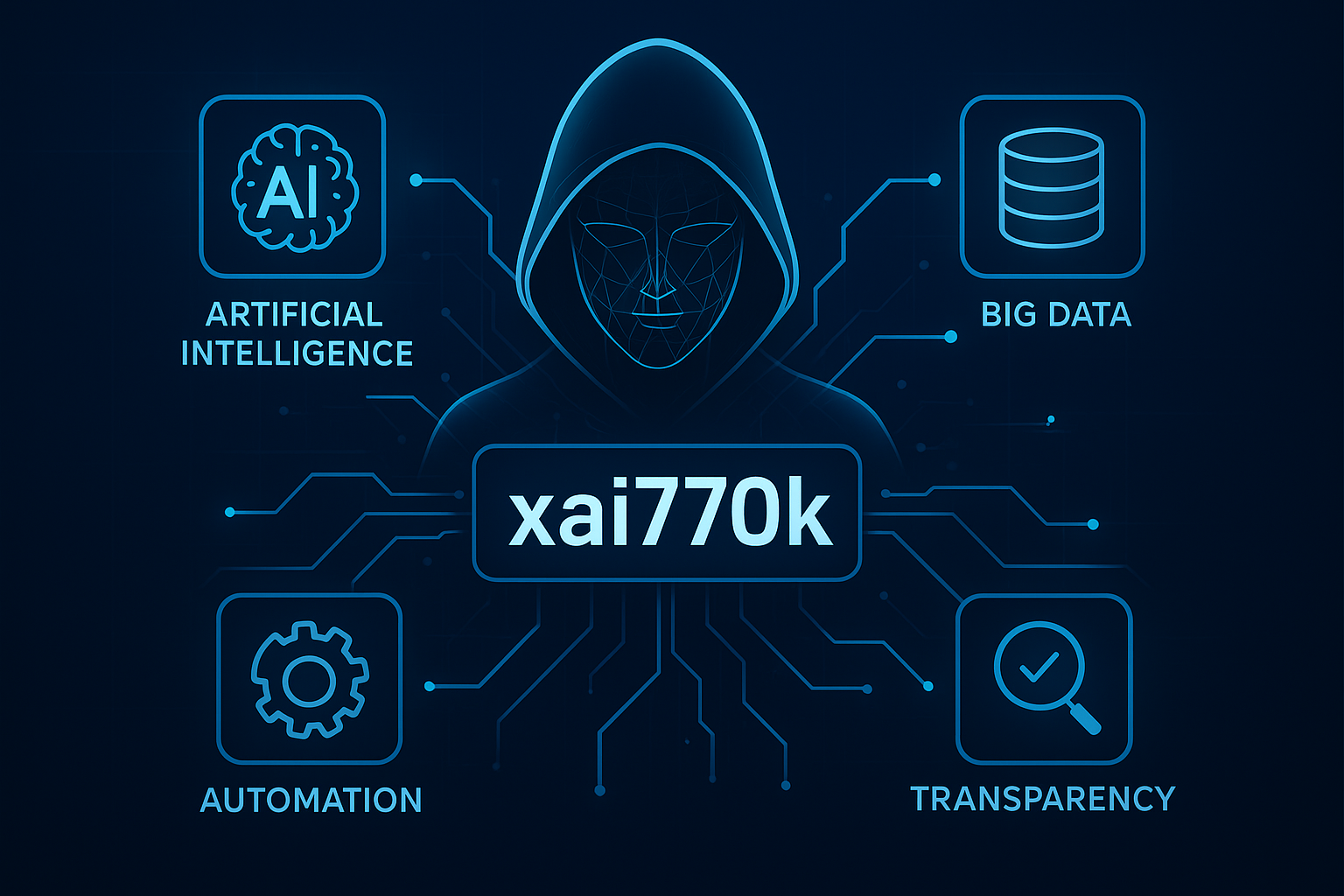Table of Contents
What is XNC?
XNC stands for Cross-Network Computing and is a recent technology aimed at linking various systems and networks together. They are enabled to exchange data and services without the need to rebuild or replace them. It serves as an intelligent bridge between platforms, enabling enterprises to work smarter and faster.
History and Evolution
XNC was developed to address the issue of standalone systems that were not able to exchange information. When businesses transitioned to digital applications and cloud-based services, they required a solution to integrate everything. It emerged from this requirement and today facilitates real-time communication and integration on numerous platforms.
Why is it Important in a Modern Context?
Now, XNC is a must for online expansion. It enables businesses to leverage cloud infrastructure, artificial intelligence, and big data tools within a single platform. It facilitates quick and secure sharing of information, making businesses more agile and competitive.
The Fundamentals

The central concept of XNC is simple and seamless connectivity. It is designed to be flexible, scalable, and secure. It employs open standards, so it can interoperate with numerous different systems without the need for special setups or tools.
Terminologies
Common terminologies
Nodes: Locations where systems connect.
Federated Networks: Collections of systems cooperating.
Data Translation: Translating data into a common format. These ideas help explain what It does and how it works.
Comparable Technologies
XNC isn’t the same as other solutions such as VPNs or regular APIs. Those can link systems, but It does more by enabling full interaction between platforms. It’s suited for complicated systems and integration projects on the long run.
XNC Technology
It is an architecture with layers. It has a user layer, a processing layer, and a data layer. These layers communicate with one another over networks, employing shared languages and structures. This renders it both powerful and versatile.
Step-by-Step Breakdown
Once a user requests, XNC forwards it to a middle layer that has knowledge of both sides. It then converts the request and forwards it to the appropriate system. Once processed, the output is posted back to the user. This seamless flow is what enables it across platforms.
Backend Infrastructure
Behind it are robust systems such as cloud servers, APIs, and containers. These technologies ensure everything is running fast and securely. They also enable enterprises to scale up or down based on demands.
Use Cases
Banks utilize XNC to link their apps and information in real time. It assists with such applications as mobile banking, fraud prevention, and customer service. It also maintains everything secure and compliant with finance rules.
Healthcare
In the healthcare sector, XNC links hospitals, clinics, and labs. It enables fast and secure sharing of patient information, improving treatment and conserving time. It also assists in adhering to regulations such as HIPAA for data privacy.
E-Commerce
It is utilized by e-commerce sites to handle inventory, customer data, and payment systems within various tools. It allows online shops to provide users with a seamless and quick experience regardless of where their data is located.
Government and Public Services
Government agencies utilize XNC to integrate services such as IDs, taxes, and public safety systems. This facilitates the sharing of data between departments and enables them to serve citizens better.
Benefits

XNC makes it easy for systems to grow. Whether a company is small or large, it can scale to fit the need. It also helps cut down on time and costs by removing unnecessary steps.
Cost Reduction
Since it works with existing tools, businesses don’t have to spend a lot on rebuilding systems. It reduces IT costs and lowers maintenance efforts by simplifying integrations.
Enhanced User Experience
By integrating everything seamlessly, it enhances the overall user experience. Applications execute faster, data loads faster, and users receive what they require with minimal delay or uncertainty.
Security and Compliance Features
It includes robust security features such as encryption and access control. It also allows compliance with regulations such as GDPR, HIPAA, and PCI-DSS, which is critical in regulated environments.
Challenges and Limitations
Although XNC is highly desirable, it involves a few technical problems. It includes complicated installation needs, demanding developers, and very old legacy systems integration. Implementation of it can become time-consuming and expensive without the necessary expertise.
Regulatory and Legal Considerations
XNC typically involves sensitive information flowing between systems, and this creates compliance and legal issues. Organizations will need to ensure their applications comply with privacy legislations such as GDPR, HIPAA, and national cybersecurity laws. Non-compliance will have serious repercussions.
Common Myths and Misconceptions
Some individuals believe that it is meant for big companies or that it replaces all the systems in place. This is not the case. It is scalable and can be used for small to medium-sized businesses as well. It also integrates with existing systems, instead of replacing them entirely.
Case Studies: Successful Implementation
It has been employed successfully by several organizations to enhance their systems. For instance, an international retail chain employed it to integrate its online and offline stores, leading to accelerated order processing and enhanced customer satisfaction. In another instance, a hospital employed it to transfer patient records across various clinics, improving care while reducing costs.
Interviews with Industry Leaders Employing
Tech innovators tend to commend for its ease of use and saving costs. IT experts and digital transformation specialists indicate that It makes it easier to connect tools faster and securely, particularly in hybrid environments.
Lessons Learned to from Project Failures
XNC projects do not always thrive. Failures typically occur because of inadequate planning, insufficient training, or omitting the testing process. These lessons indicate that proper setup and monitoring are essential for successful implementation.
Tools and Platforms

There are numerous tools that support It, such as Docker, Kubernetes, AWS, Azure, and open-source platforms like Apache Kafka. These tools are used to manage traffic, security, and performance in networks.
Integration with Legacy Systems
One of the strongest features of XNC is its capability to interface with legacy systems. Even when a company utilizes aged software, It can link it with newer tools without full upgrades or replacement of the system.
Open-Source vs Proprietary Platforms
Companies can opt between open-source XNC tools, which are customizable and inexpensive, or proprietary platforms, which are backed by professional services. It relies on the technical expertise and budget of the company.
Emerging Technologies
XNC can work well with AI. It can process data rapidly between systems. AI applications can retrieve the correct information in real time. They can assist with smart decisions, customer service robots, and predictive analysis.
Role of Blockchain
Blockchain can enhance security and transparency within It setups. Blockchain provides a guarantee that all data exchanges or transactions are stored securely, which is significant in sectors such as healthcare and finance.
Internet of Things (IoT) Synergy
XNC enables IoT devices to talk to central systems. This is particularly convenient in smart homes, connected factories, and healthcare monitoring devices. It ensures the data from all devices are centralized and actionable.
Future of XNC
XNC will expand rapidly as companies transition to hybrid and multi-cloud environments. New trends for the future include zero-trust security models, intelligent automation, and additional tools for real-time analytics.
Innovations on the Horizon
New technologies such as quantum computing, edge AI, and digital twins will most probably merge them to further enhance systems to be more powerful and smart. These emerging technologies will drive XNC to the next level.
Expert Predictions on =Growth
XNC is expected by experts to be an integral component of digital infrastructure. With enterprises requiring faster and more secure environments, it will be imperative for scalable, flexible, and trustworthy operations across various industries.
FAQ
What is XNC abbreviated as?
XNC typically stands for Cross-Network Computing, a technology which enables various technologies and platforms to function harmoniously together.
Is XNC intended for large corporations only?
No, It is scalable and suitable for small, medium, and large organizations based on their requirements.
What makes XNC different from VPN or API?
VPNs encrypt a connection, and APIs integrate software, but XNC provides complete system-level integration between networks, so it is more exhaustive.
Is XNC secure?
Yes, It employs strong encryption, access controls, and monitoring to ensure data security and legal compliance standards.
Can XNC be compatible with old legacy systems?
Absolutely. One of the main advantages are that it can integrate new and old systems without having to recreate everything from scratch.
Conclusion
XNC is not just a buzzword—it’s an incredible tool that enables companies to remain connected, effective, and competitive in today’s digital era. From healthcare to finance, e-commerce to government, XNC provides secure, scalable, and intelligent solutions for any sector. With the rise of cloud computing, AI, and IoT, XNC is not just relevant—it’s essential. Whether you’re a developer, IT manager, or business owner, understanding and using XNC can open the door to faster growth, better customer experiences, and future-proof operations.
Also Read : Is GMT Coin a Good Investment? Discover Risks & Rewards
Share on LinkedIn



